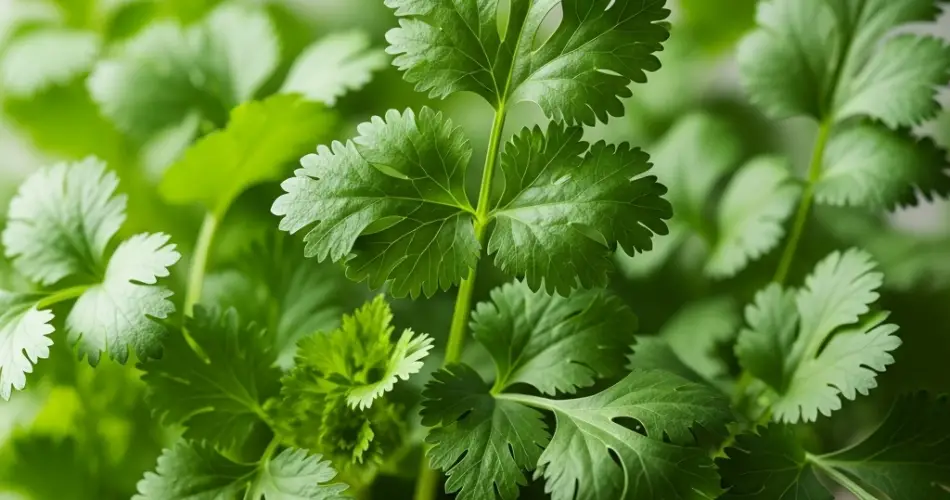Coriander, also known as cilantro, is a versatile herb that’s prized for its fragrant leaves and seeds. However, many gardeners struggle to keep it from bolting, especially in hot weather. Bolting is when the plant prematurely produces flowers and seeds, often making the leaves taste bitter and reducing the overall harvest. Fortunately, with the right techniques, you can delay or even prevent bolting to enjoy a longer harvest season.
What Is Bolting?
Bolting occurs when a plant shifts its energy from producing leaves to producing flowers and seeds. In coriander, this usually happens when the temperature rises or when the plant experiences stress. Once coriander bolts, its leaves become sparse and lose much of their flavor, and the plant quickly begins to dry out. Understanding the causes of bolting is key to preventing it.
Why Coriander Bolts in Hot Weather
Coriander is a cool-season herb, meaning it prefers mild temperatures and consistent moisture. When the weather becomes hot and dry, the plant senses it as a signal to complete its life cycle quickly. In regions with hot summers, coriander can bolt as soon as temperatures reach 75°F (24°C) or higher, especially if nights remain warm.
Other factors that can contribute to early bolting include:
-
Sudden temperature fluctuations
-
Overcrowded planting
-
Infrequent watering
-
Poor soil quality
Choose Slow-Bolting Varieties
One of the best ways to prevent coriander from bolting in hot weather is to choose a variety that is slow to bolt. Several cultivars have been bred specifically to resist bolting, even in warmer climates. Look for varieties such as:
-
‘Santo’ – A popular slow-bolting type ideal for warmer climates.
-
‘Calypso’ – Known for its resistance to heat and long leaf production.
-
‘Leisure’ – Another slow-bolting variety with good leaf yield.
Check seed packets or nursery labels for the term “slow to bolt” when making your selection.
Ideal Growing Conditions
To prevent coriander from bolting, create the most comfortable environment possible for the plant:
-
Light: Coriander needs full sun to partial shade. In hot weather, a little afternoon shade can help protect it from excessive heat.
-
Soil: Use well-draining, nutrient-rich soil with a neutral pH. Mix in compost to keep the soil fertile and retain moisture.
-
Watering: Keep the soil consistently moist but not soggy. Water early in the day to avoid fungal issues.
-
Spacing: Give each plant enough space to grow—about 6 to 8 inches apart. This ensures proper air circulation and reduces stress from overcrowding.
Mulch to Keep Roots Cool
Applying a layer of organic mulch around coriander plants helps maintain a cooler root environment and conserves soil moisture. Straw, shredded leaves, or compost are excellent mulch choices. This simple step can significantly delay bolting in hot climates.
Sow Successively
Since coriander is short-lived in warm weather, consider sowing seeds in succession every two to three weeks. This ensures a continuous harvest even if some of the earlier batches bolt. Start sowing in early spring, then continue planting new seeds throughout the season until it becomes too hot. Resume sowing in late summer or early fall for a second harvest.
Harvest Regularly
Frequent harvesting encourages coriander to produce more leaves and delays the flowering process. Snip outer leaves first, and never remove more than one-third of the plant at a time. If you notice flower stalks beginning to form, pinch them off immediately to delay full flowering.
Provide Afternoon Shade
If you live in an especially warm region, try growing coriander in an area that gets morning sun and afternoon shade. You can also use shade cloth or plant taller companions nearby to shield coriander from the harsh midday sun.
Grow in Containers
Growing coriander in containers gives you greater control over the environment. You can move the pot to a cooler location during heat waves or place it in dappled shade when needed. Make sure the container has good drainage and is at least 8 inches deep to accommodate the taproot.
Let Some Plants Bolt
Despite your best efforts, some coriander may still bolt. That’s okay—let a few plants flower and go to seed. You can harvest the seeds for cooking, save them for next season, or allow them to self-sow for a future crop.
Final Thoughts
Preventing coriander from bolting in hot weather requires careful planning, from choosing the right varieties to adjusting your growing techniques. By managing heat exposure, ensuring consistent watering, and harvesting regularly, you can extend your coriander harvest and enjoy fresh, flavorful leaves for longer. Even if a few plants bolt, you can still benefit by collecting seeds or attracting pollinators to your garden.



